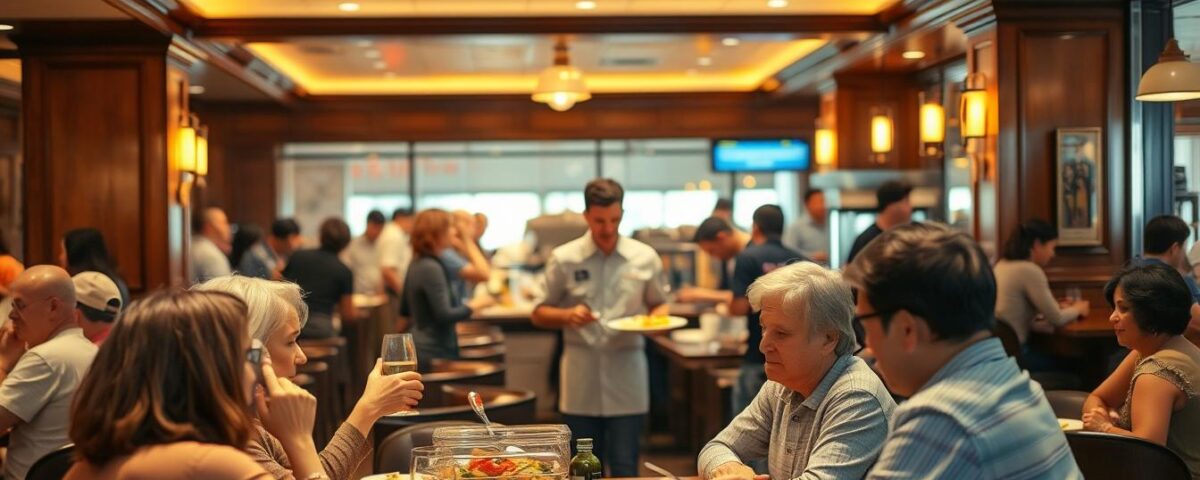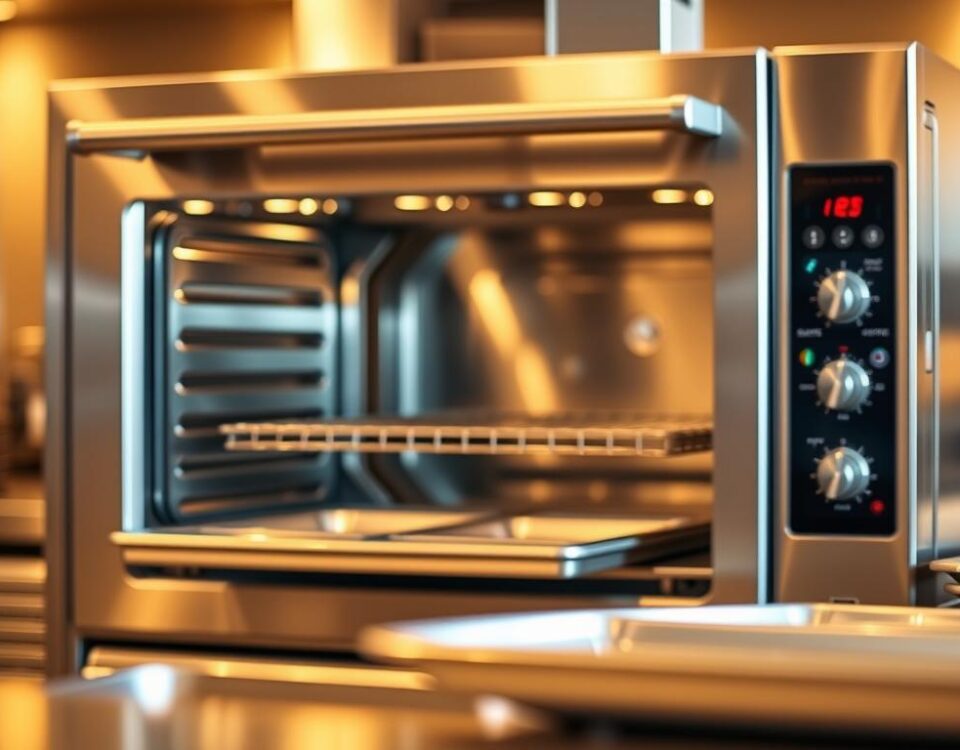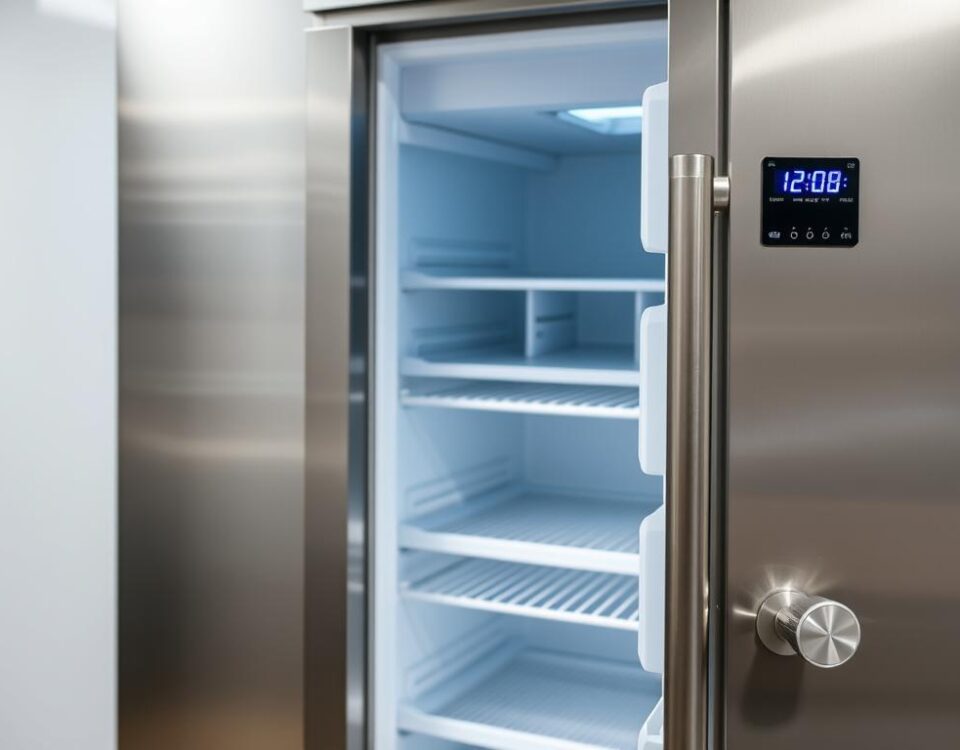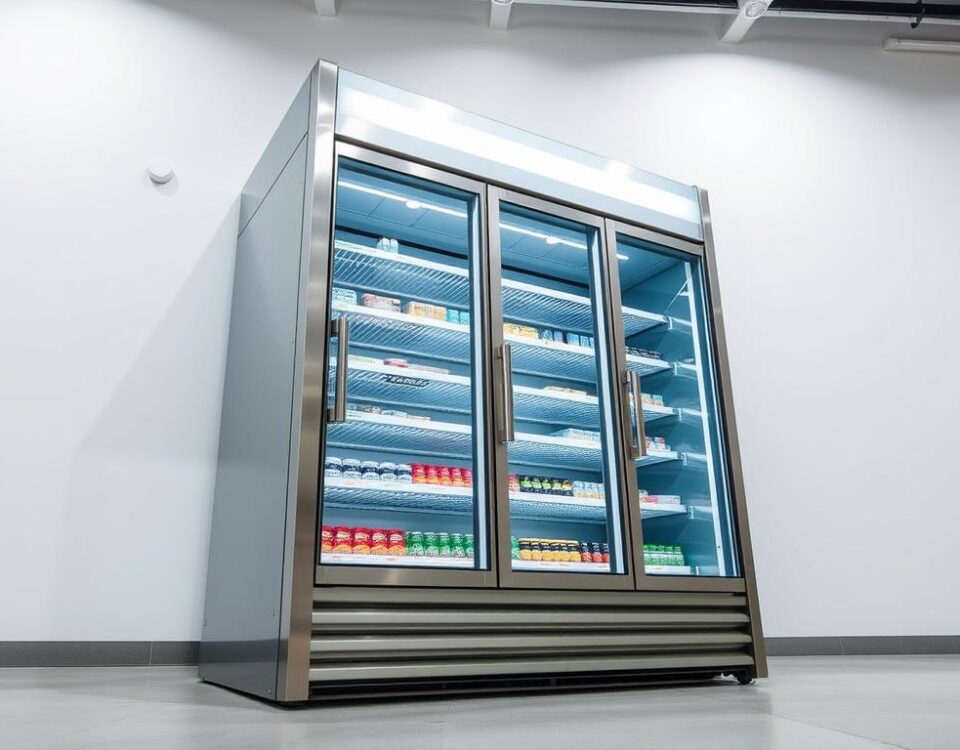
6 Inventory Hacks That Save Restaurants Thousands Every Month
July 4, 2025
Psychological Triggers That Make Restaurant Customers Spend More Without Knowing
July 5, 2025Imagine walking into a bustling restaurant on a Friday night, the aroma of freshly cooked food filling the air, and the sound of laughter and chatter filling your ears. It’s a scene many restaurateurs dream of, but achieving it night after night requires more than just great food; it demands a deep understanding of customer loyalty and effective retention strategies.
Did you know that increasing customer retention by just 5% can boost profits by 25-95%? This staggering statistic highlights the importance of keeping your existing patrons coming back. So, what’s the secret to making your restaurant a repeat destination for diners?
I will explore the smart strategies that busy restaurants use to keep their tables full, focusing on the crucial aspect of customer retention and how it contributes to long-term success.
Key Takeaways
- Effective customer retention is crucial for a restaurant’s long-term success.
- Increasing customer retention rates can significantly boost profits.
- Focusing on existing customers is often more profitable than acquiring new ones.
- Understanding the difference between customer acquisition and retention is key.
- Tracking customer retention rates is essential for building a loyal customer base.
The Secret Behind Full Tables: Understanding Customer Retention
Understanding customer retention is vital for restaurants to stay competitive. It’s not just about attracting new customers, but also about keeping the existing ones coming back. In this section, we’ll delve into the importance of customer retention and how to measure it.
Why Keeping Existing Customers Matters More Than Finding New Ones
Retaining existing customers is crucial for any restaurant business. It’s more cost-effective to keep existing customers than to acquire new ones. Loyal customers also tend to spend more and become brand ambassadors, recommending the restaurant to friends and family. By focusing on customer retention, restaurant owners can build a loyal customer base that drives long-term success.
How to Measure Your Restaurant’s Customer Retention Rate
To measure customer retention, you need to calculate your restaurant’s Customer Retention Rate (CRR). Here’s a simplified approach:
- Identify your timeframe: Choose a period to analyze, such as monthly, quarterly, or yearly.
- Calculate the retention rate using the formula: CRR = ((E-N)/S) x 100, where E is the total number of customers at the end of the period, N is the number of new customers acquired, and S is the number of customers at the start of the period.
By understanding and measuring customer retention, restaurant owners can make data-driven decisions to improve their retention strategies and keep tables full every night.
Consistently Exceptional Food Quality: The Foundation of Loyalty
The foundation of a loyal customer base in the restaurant industry lies in consistently serving exceptional food quality. This consistency is what differentiates successful restaurants from others and fosters a loyal following. When customers know they can rely on a restaurant to deliver high-quality dishes every time they visit, they’re more likely to return.
Maintaining Menu Consistency While Keeping Things Fresh
To achieve this consistency, it’s crucial to strike a balance between maintaining familiar menu items and introducing new dishes to keep the menu fresh and exciting. Menu engineering plays a significant role here, allowing restaurants to analyze sales data and customer feedback to identify popular and profitable items. By highlighting these items and using strategic design elements like bold fonts and enticing images, restaurants can guide customer choices effectively.
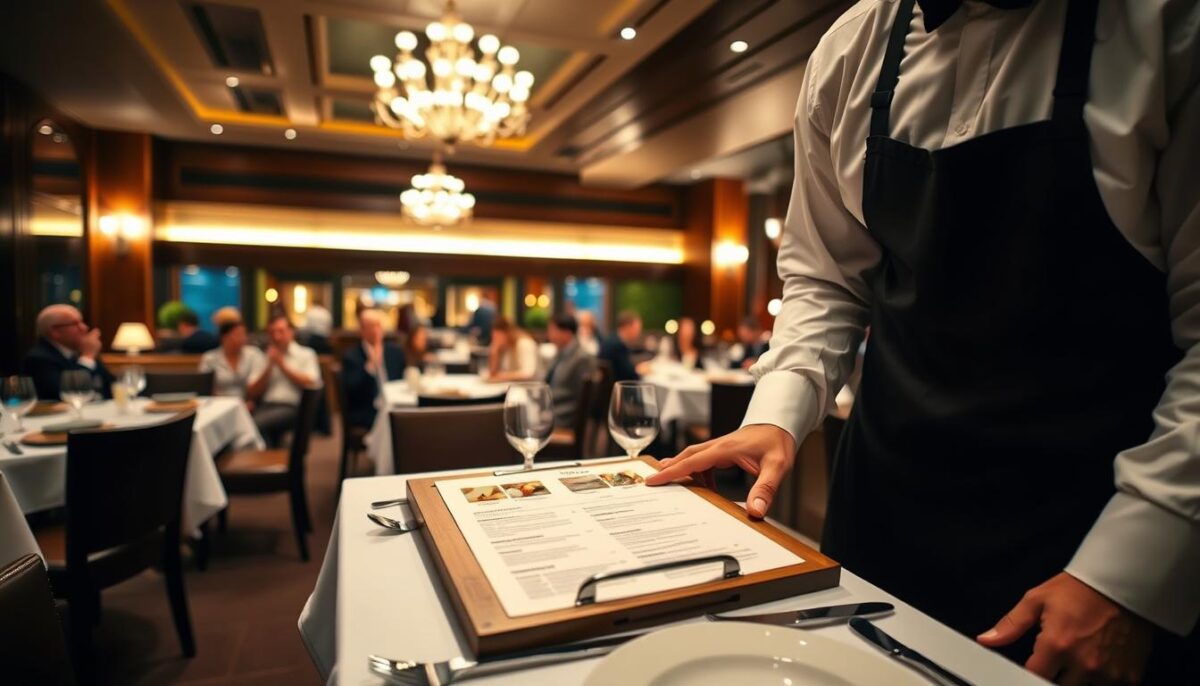
Strategic Menu Engineering to Boost Profitability
Menu engineering is not just about promoting high-margin items; it’s also about creating an experience that enhances customer satisfaction. By categorizing menu items into stars, puzzles, plowhorses, and dogs based on their popularity and profitability, restaurants can make informed decisions about their menu offerings. For instance, featuring high-margin dishes prominently can encourage upselling, thereby boosting revenue.
| Menu Item Category | Popularity | Profitability | Action |
|---|---|---|---|
| Stars | High | High | Promote |
| Puzzles | Low | High | Reposition or Remove |
| Plowhorses | High | Low | Reprice or Reengineer |
| Dogs | Low | Low | Remove |
By implementing these strategies, restaurants can not only enhance customer satisfaction but also drive profitability, ultimately leading to a loyal customer base and increased revenue.
Creating Memorable Customer Experiences Beyond the Plate
To keep customers coming back, restaurants need to focus on crafting experiences that linger long after the meal is over. This involves creating an atmosphere that encourages customers to stay longer, thereby increasing sales and fostering loyalty.
First Impressions That Keep Customers Coming Back
The first impression is crucial in setting the tone for the entire dining experience. A welcoming ambiance, complete with comfortable seating, soft lighting, and intentional decor, can make customers feel at ease. Ensuring that wait staff are attentive and courteous further enhances this initial impression, making customers more likely to return.
Atmosphere Elements That Encourage Longer Stays
Several elements contribute to creating an atmosphere that encourages customers to linger. These include comfortable seating, optimal table spacing, and thoughtful lighting design. Additionally, factors such as temperature, noise levels, and scent can significantly impact the dining experience. By optimizing these elements, restaurants can create a cozy and inviting environment that makes customers want to stay longer.
Strategic music selection also plays a crucial role in influencing dining pace and spending patterns. Research has shown that the right soundtrack can increase sales by up to 9%. By carefully curating the playlist to fit the brand and atmosphere, restaurants can enhance the overall dining experience and encourage customers to stay longer.
Staff Training: Your Team as Brand Ambassadors
Effective staff training is crucial for transforming your team into brand ambassadors who drive customer loyalty. In the restaurant industry, the staff are the face of the brand, and their interactions with customers can make or break the dining experience.
Service Standards That Drive Repeat Business
Establishing high service standards is essential for encouraging repeat business. This includes ensuring that staff are attentive, knowledgeable about the menu, and responsive to customer needs. Consistency is key; every customer should feel valued and receive a similar level of service. By maintaining high service standards, restaurants can build trust with their customers, fostering loyalty.
Empowering Staff to Create Personalized Experiences
Empowering staff to create personalized experiences can significantly enhance customer satisfaction. This involves training staff to observe and remember customer preferences, such as favorite dishes or special occasions. Personalized experiences make customers feel special, encouraging them to return. For instance, remembering a customer’s name or their preferred seating can make a significant difference.
| Personalization Technique | Impact on Customer Loyalty |
|---|---|
| Remembering customer names | Increases feeling of being valued |
| Knowledge of preferred dishes | Enhances customer satisfaction |
| Special occasion recognition | Fosters emotional connection |
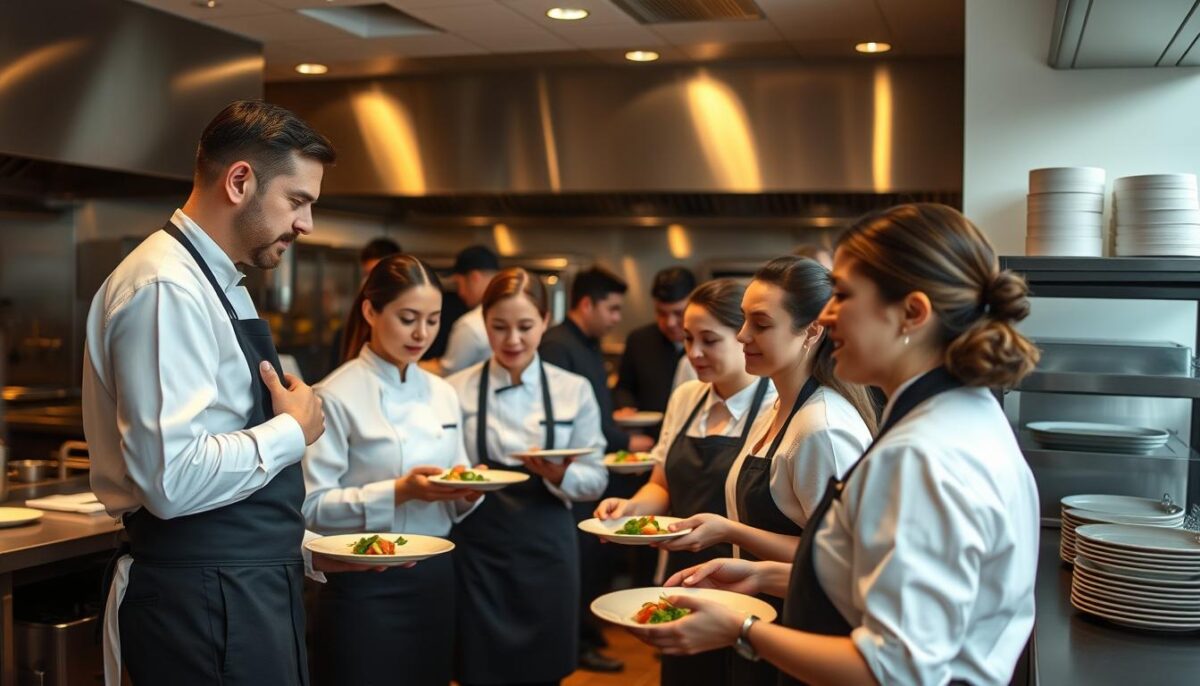
By focusing on staff training and empowering them to create memorable experiences, restaurants can drive customer loyalty and establish a strong brand reputation.
Effective Restaurant Customer Retention Strategies That Drive Loyalty
In the competitive restaurant industry, customer retention is vital for sustained growth. To keep customers coming back, restaurants must implement effective retention strategies that foster loyalty.
Implementing a Compelling Loyalty Program
A well-designed loyalty program can significantly boost customer retention. By offering rewards, discounts, or exclusive offers, restaurants can encourage repeat business. For instance, a loyalty program that rewards customers with a free meal after a certain number of visits can motivate customers to return.
| Loyalty Program Feature | Benefit to Customer | Benefit to Restaurant |
|---|---|---|
| Reward Points | Earns rewards for frequent visits | Increases repeat business |
| Exclusive Offers | Receives special discounts | Enhances customer loyalty |
| Personalized Rewards | Gets tailored offers based on preferences | Improves customer satisfaction |
Personalized Communication That Makes Customers Feel Valued
Personalized communication is key to making customers feel valued. By using customer data to tailor messages, restaurants can create a more personal connection with their customers. For example, sending a birthday greeting with a special offer can make customers feel appreciated.
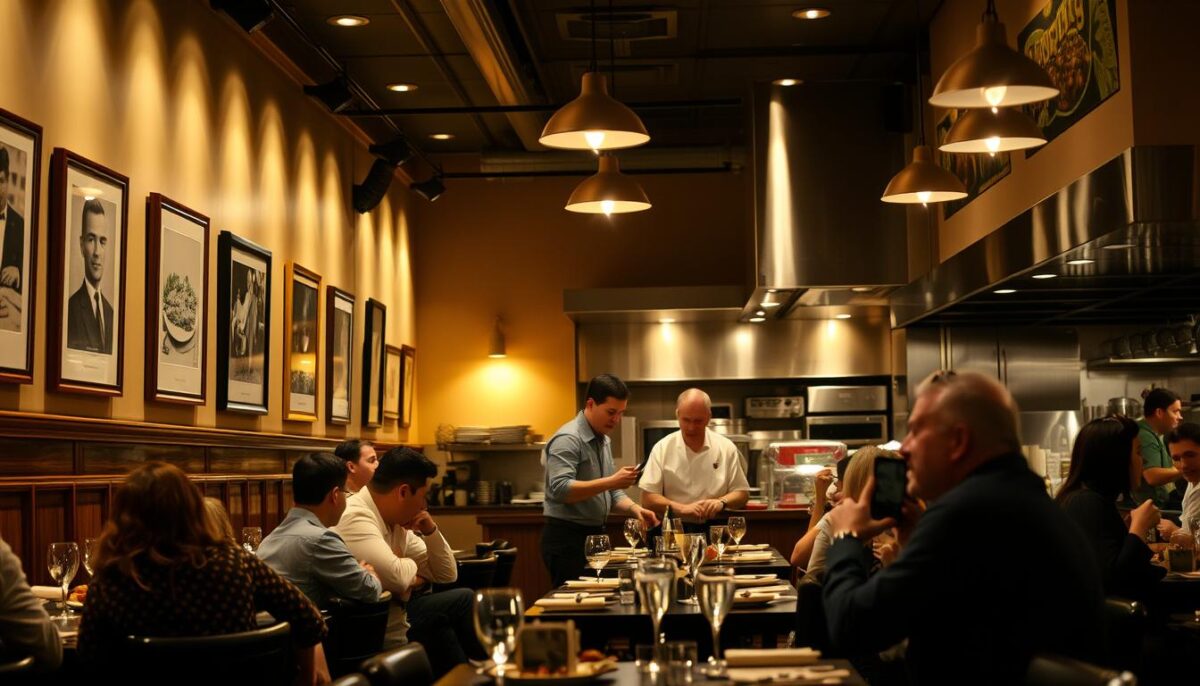
Re-engagement Tactics for Lapsed Customers
Re-engaging lapsed customers requires strategic planning. Restaurants can use personalized email campaigns or special offers to remind customers of their great experiences. By identifying different segments of lapsed customers and tailoring re-engagement strategies, restaurants can bring back valuable customers.
For instance, offering a limited-time discount to customers who haven’t visited in 60 days can create a sense of urgency, encouraging them to return.
Leveraging Technology to Enhance the Dining Experience
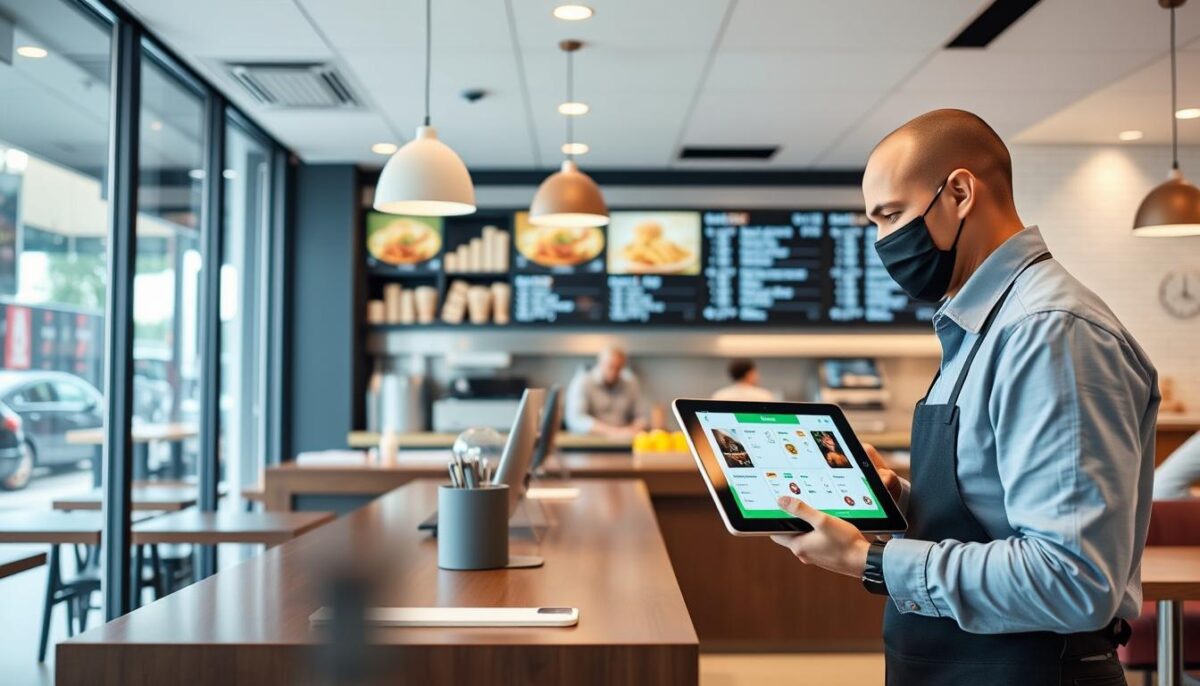
Modern technology is playing a crucial role in enhancing the dining experience for restaurant customers. By streamlining operations and improving customer service, restaurants can increase customer satisfaction and loyalty.
Customer Relationship Management (CRM) Systems for Restaurants
A CRM system helps restaurants manage customer interactions and data, enabling personalized marketing and improving customer retention. By leveraging customer data, restaurants can create targeted campaigns that drive repeat business and enhance the overall dining experience.
Digital Ordering and Payment Solutions That Improve Convenience
Digital ordering and payment solutions are becoming increasingly popular in the restaurant industry. These solutions not only improve operational efficiency but also enhance the customer experience by providing a convenient and seamless dining experience. Technologies such as tap-to-pay and tableside tablets are revolutionizing the way restaurants serve their customers.
By implementing these technologies, restaurants can improve customer satisfaction, increase efficiency, and ultimately drive sales. It’s essential to balance technology with human interaction to create a convenient yet personal dining experience that builds loyalty.
The Power of Ambiance: Music, Lighting, and Design
Ambiance is more than just decor; it’s a key factor in making a restaurant memorable. The right ambiance can significantly enhance the dining experience, fostering loyalty among customers.
How the Right Music Influences Customer Behavior
The music played in a restaurant can greatly influence customer behavior. For instance, a college hotspot might thrive with upbeat indie tunes, while a retro diner might prefer nostalgic music. Research shows that the right playlist can increase customer satisfaction and encourage longer stays.
Creating an Environment That Reflects Your Brand
To create an environment that reflects your brand, consider the overall aesthetic and atmosphere you want to convey. This includes design, lighting, and decor that work together to create a cohesive brand identity. For example, a modern restaurant might use sleek lines and contemporary decor, while a vintage-themed eatery might incorporate antique elements.
| Ambiance Element | Description | Impact on Customers |
|---|---|---|
| Music | Upbeat or nostalgic tunes | Increases satisfaction and encourages longer stays |
| Lighting | Warm or bright lighting | Sets the mood and enhances the dining experience |
| Design | Cohesive decor and aesthetic | Creates a memorable environment that reflects the brand |
By carefully curating these elements, restaurants can create an ambiance that not only attracts customers but also fosters loyalty and encourages repeat visits.
Building a Strong Online Presence That Drives Foot Traffic
Building a strong online presence is no longer optional for restaurants; it’s a necessity. In today’s digital landscape, a restaurant’s online identity can make or break its success. As a restaurant owner, establishing a robust online presence is crucial for attracting new customers and retaining existing ones.
Social Media Strategies That Connect With Your Target Audience
To effectively leverage social media, restaurants must first understand their target audience. This involves creating content that resonates with customers and encourages engagement. Use high-quality visuals and compelling storytelling to showcase your restaurant’s unique offerings. By doing so, you can build a loyal following and drive foot traffic to your establishment. For instance, sharing behind-the-scenes moments or limited-time offers can create a buzz around your brand.
Managing Your Restaurant’s Reputation Through Online Reviews
Online reviews have become the new word-of-mouth, with 94% of diners checking reviews before visiting a restaurant. To manage your online reputation, it’s essential to encourage satisfied customers to leave reviews. This can be achieved through promotional campaigns, such as discount offers and email marketing. Your Google Business Profile is also a critical tool for managing your online presence. Keep it updated with accurate information, and use it to share specials, events, and high-quality photos. Responding to all feedback, especially negative reviews, demonstrates your commitment to customer satisfaction.
By implementing these strategies, restaurant owners can build a strong online presence that drives foot traffic and boosts their brand. It’s about creating a cohesive online identity that reflects your restaurant’s values and mission.
Special Events and Experiences That Create Buzz
To keep your restaurant top of mind, it’s essential to create special events and experiences that generate excitement. A well-planned event can drive loyalty and attract new customers, ultimately growing your business. By leveraging unique experiences, you can differentiate your brand in a crowded market.
Themed Nights and Limited-Time Offers
Themed nights and limited-time offers are effective strategies for creating buzz around your restaurant. By hosting events like wine tastings or live music nights, you can create an engaging atmosphere that encourages customers to return. Limited-time offers, such as seasonal specials or holiday-themed menus, drive urgency and boost sales. As a marketing strategy, these events can be promoted through social media and email lists to maximize reach.
Community Engagement and Local Partnerships
Engaging with the local community is a powerful way to build loyalty and expand your customer base. Partnering with local businesses for cross-promotions or sponsoring local events can increase foot traffic and introduce your restaurant to new audiences. For example, offering gift cards as prizes at local events or collaborating with nearby businesses for joint promotions can be mutually beneficial. As part of your marketing efforts, community engagement initiatives can foster emotional connections with customers, going beyond the transactional dining experience.
Collecting and Acting on Customer Feedback
To stay ahead in the restaurant business, it’s essential to not only collect customer feedback but also to act upon it to foster a loyal customer base. Customer feedback serves as a direct line to understanding customer needs and preferences, allowing restaurants to make informed decisions that enhance the dining experience.
Creating Effective Feedback Systems
An effective feedback system is the backbone of any customer-centric strategy. This involves implementing various channels through which customers can provide their feedback, such as comment cards, online surveys, and social media platforms. By making it easy for customers to share their thoughts, restaurants can gather valuable insights into their service, food quality, and overall ambiance. For instance, a simple survey on the table or a follow-up email after a visit can encourage customers to share their experiences.
Turning Negative Experiences Into Loyalty Opportunities
Negative feedback, when handled properly, can become a powerful tool for building customer loyalty. The concept of the service recovery paradox suggests that effectively resolving a customer’s complaint can actually increase loyalty more than if no issue had occurred at all. To achieve this, restaurants should empower their staff with a step-by-step service recovery framework. This includes listening to the customer’s concern, apologizing sincerely, resolving the issue promptly, and following up to ensure satisfaction. By turning negative experiences into positive outcomes, restaurants can not only retain customers but also enhance their reputation through positive word-of-mouth.
For example, a customer once complained about a delayed order at a busy restaurant. The staff apologized, offered a complimentary appetizer, and expedited the order. The customer left satisfied and later posted a positive review online, praising the staff’s handling of the situation. This demonstrates how effective service recovery can transform a potentially negative review into a positive endorsement.
“The key to successful service recovery is not just resolving the issue but doing so in a way that shows the customer they are valued and appreciated.”
Conclusion: Bringing It All Together for Long-Term Success
In a fiercely competitive environment, restaurants that prioritize customer retention are better positioned for sustained growth and prosperity. By implementing effective restaurant customer retention strategies, you can cultivate a loyal customer base that serves as the foundation of your restaurant’s success.
Throughout this article, we’ve explored various strategies aimed at keeping customers coming back, from maintaining exceptional food quality to leveraging technology and creating memorable experiences. It’s essential to recognize that these strategies work together as an integrated system, rather than isolated tactics. By prioritizing retention initiatives based on your restaurant’s specific situation, you can maximize their impact.
To achieve long-term success, it’s crucial to measure the overall impact of your retention efforts on your restaurant’s financial performance and sustainability. This involves implementing a roadmap that starts with quick wins and builds toward more complex initiatives over time. Remember, customer retention is not a one-time project but an ongoing commitment to building meaningful relationships that stand the test of time.
The most successful restaurants balance innovation with consistency, keeping regulars coming back while attracting new customers who will become tomorrow’s loyal patrons. By focusing on loyalty and implementing effective strategies, you can ensure your restaurant remains full and thriving night after night.
FAQ
How can I boost my restaurant’s loyalty program?
To boost your loyalty program, I recommend offering personalized rewards and exclusive offers to your loyal diners. This can be achieved by leveraging customer data to understand their preferences and dining habits.
What’s the best way to measure my restaurant’s customer loyalty?
To measure customer loyalty, I track key metrics such as repeat visits, positive online reviews, and social media engagement. This helps me understand how well my loyalty program is performing and identify areas for improvement.
How can I re-engage lapsed customers?
To re-engage lapsed customers, I use targeted marketing campaigns and special offers to encourage them to come back. I also make sure to collect feedback from these customers to understand why they stopped visiting and make necessary adjustments.
What’s the importance of ambiance in a restaurant?
Ambiance plays a crucial role in creating a memorable dining experience. I focus on elements like music, lighting, and design to create an atmosphere that reflects my brand and makes customers feel valued.
How can I effectively manage online reviews?
To manage online reviews, I respond promptly to both positive and negative feedback. I also use this feedback to improve my service and enhance the dining experience for my customers.
What’s the benefit of implementing a CRM system?
Implementing a CRM system helps me manage customer interactions and data more efficiently. This enables me to personalize my marketing efforts and improve customer engagement, leading to increased loyalty and repeat business.
How can I create a successful loyalty program?
To create a successful loyalty program, I focus on offering relevant rewards and personalized experiences that make customers feel valued. I also communicate effectively with my loyal customers to keep them engaged and informed.
